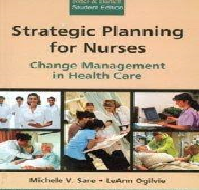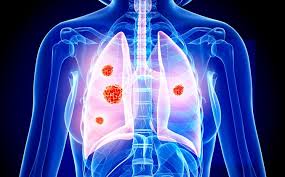
Nursing Process and Nursing care plan
Order Instructions:
Tips for Success
The M6A3: Application of the Nursing Process Paper counts as 30% of your grade for this course.
We suggest that you develop and outline and use the following time-line as your guide for completing your paper:
Week 1: Review the requirements for the paper.
Week 2: Begin developing an outline for your paper.
Week 3: You should have your outline completed.
Week 4: You should be using your outline to write your paper.
Week 5: Continue work on your paper.
Week 6: Finalize your paper and submit by the end of the week.
linked item M6A3: Application of the Nursing Process Paper
Using APA format, the information from this course, and your assigned readings write a six (6) to ten (10) page paper (excludes cover and reference page) addressing the application of the nursing process to a patient care scenario. Use these directions and the scoring rubric as you develop the paper. Outlines and abstracts are NOT required with this paper. Do not include the scenario in the paper
A minimum of three (3) current professional references must be provided excluding a nursing diagnosis book. Current references include professional publications or valid and current websites dated within five (5) years. Additionally, a textbook that is no more than one (1) edition old may be used. Do not use abbreviations…write out everything.
The paper consists of three (3) parts:
The meaning and use of the nursing process in making good nursing judgments that effect patient care
The development of a plan of care using the nursing process for a specific patient situation
The preparation stage for a teaching plan to prevent a recurrence of a similar situation
The following sheet will assist you when composing the plan of care for the paper: Overview of the Nursing Process.
Part 1 (3-4 pages)
Review the required readings about the nursing process. In your own words, define each step of the process and provide an example for each step.
In the implementation step, what is meant by direct and indirect care as described by the Nursing Intervention Classification (NIC) project?
Discuss the three (3) types of nursing interventions (nurse-initiated, dependent, and interdependent) that applies to the patient care situation. Provide an example of each (refer to your textbook).
Explain how the nursing process provides the basis for the registered nurse to make a nursing judgment that results in safe patient care with good outcomes.
Discuss how the registered nurse evaluates the overall use of the nursing process. Identify three (3) variables that may influence the ability to achieve the desired outcomes for the patient.
How is the plan of care modified when the outcomes are not met?
How does the RN use the nursing process to make decisions about the priority of care?
Part 2 (3 pages)
Patient scenario
A 78-year-old man is living in an assisted living facility. He is able to walk very short distances and uses a wheelchair to transport himself to the communal dining room. He administers his own medications independently and bathes himself. Over the last year he prefers to remain in the wheelchair even when in his room. He has a history of CHF, hypertension, hyperlipidemia and lower extremity weakness. He is able to state his current medications include metoprolol (Lopressor) 50 mg once daily by mouth, furosemide (Lasix) 20 mg once daily by mouth, Quinapril (Acupril) 20 mg once daily by mouth, atorvastatin (Lipitor) 20 mg once daily by mouth. During a routine examination, his physician noted a pressure ulcer over the ischium on the right buttocks. The wound is oval about 10mm x 8 mm, with red and yellow areas in the middle and black areas on some surrounding tissue. It has a foul odor. The patient had been padding the area so “it doesn’t get my pants wet”. The physician arranged for him to be admitted to the hospital in order for intravenous antibiotic therapy and wound care to be initiated. After being admitted to the hospital his medications are: metoprolol (Lopressor )50 mg orally every 12 hours, furosemide (Lasix ) 40mg once daily by mouth, quinapril HCl (Accupril) 40 mg once daily by mouth, cefazolin (Ancef)1.5 Grams in 50 mL 0.9 % Normal Saline intravenously three times a day. The result of the wound culture identified Methicilin-resistant staphylococcus aureus. After a surgical debridement of the black tissue a SilvaSorb® (antimicrobial gel) dressing was ordered daily.
Develop a Plan of Nursing Care for this patient that includes all steps of the nursing process:
One (1) actual NANDA-I nursing diagnosis statement addressing the priority problem the patient is experiencing. You need to provide the entire nursing diagnosis statement. For example: Acute pain, related to tissue trauma, as evidenced by patient rating pain at 7 on the 0-10 verbal pain scale. Provide a rationale, with evidence, why this nursing diagnosis is the priority for this patient.
What is the assessment data that supports the use of this nursing diagnosis? These are the assessments you will collect to determine if the patient has this nursing diagnosis. For example: Will assess the patient’s pain using the 0-10 verbal pain scale.
One (1) expected outcome (realistic, measureable and contains a time frame). that addresses the diagnosis and meets the criteria for an expected patient outcome. Discuss whether the outcome is a cognitive, psychomotor, affective or physiologic outcome. Discuss why the time frame selected for the evaluative criteria was selected. Use evidence as the basis for the time frame and criteria. You need to be specific to this particular patient. For example: Patient will rate pain at 3 on the 0-10 verbal pain scale. Of course, you would also need to answer the rest of the items in this section.
Four (4) nursing interventions that includes at least one (1) nurse-initiated, one (1) dependent, one (1) interdependent intervention. Label your interventions as above. Provide a rationale for each intervention that is evidence-based. Lastly, your interventions must be able to move the patient toward the achievement of the outcome. Select interventions, you as the RN can perform, that could reduce the pain and provide the rationale as to why; be sure they are evidence-based. For example: Teach patient guided imagery to distract attention and reduce tension.
Part 3 (1-2 pages)
To assist the patient in preventing a recurrence of a similar incident once he returns to the assisted living environment, the RN needs to develop a teaching plan. Use the nursing process to consider the information the RN would need prior to development of the plan. Respond to the following and be able to support your answers. You will not be developing a teaching-learning plan but demonstrating using the teaching-learning process to prepare for an individualized plan.
How does the RN decide the format of the teaching plan, i.e., written, verbal, or other?
How does the RN know which information needs to be included?
When does the RN determine how and when to evaluate the teaching-learning process?
Compose your work using a word processor (or other software as appropriate) and save it frequently to your computer. Use a 12 font size, double space your work and use APA format for citations, references, and overall format.
SAMPLE ANSWER
Nursing Process and Nursing care plan
Part 1: Nursing Process
Nursing process is the key factor that facilitates the nurses in delivering quality patient centered care. Nursing is defined as the science and art concerned with protecting and promoting peoples psychological, physical, psychological and cultural aspects. The science is based on a big theoretical framework whereas its art is depicted on the caring capacities and skills of each nurse. The concept of nursing process was established to defined to guide the nurses when making decisions on care provision and it involves five major steps namely; a) Assessment, b) diagnosis, c) planning/identification of outcome, d) implementation, and e) evaluation (Bruylands Et al., 2013).
Assessment is the first step of nursing process and involves gathering of information and data concerning a particular event. The nurses are encouraged to perform holistic care assessment of both patient healthcare history and physical examination so as to determine the specific healthcare demands of a patient. The data gathered is sorted, organized and documented for future references. Nursing diagnosis is the second step in nursing process; which involves analysis of the assessment and data gathered. Diagnosis process is conducted with the aim of establishing the patient’s specific healthcare needs. It involves identifying the actual problem including disease clinical manifestation. It also includes identification of risks factors and ways to improve patient’s outcome (Liu, 2013).
Planning step entails all activities geared towards development of priorities, objectives and the identification of the desired outcomes. It involves identification of specific nursing interventions as documented by action plan. Nursing action plan is effective if it is guided by Maslow’s hierarchy of needs and the Betty Neuman’s system theory. The implementation process involves putting the action plan into action to achieve the desired outcome set for each patient. The patient continued to receive treatment and quality care until their healthcare condition is achieved. The last step is evaluation and it involves assessing of the outcomes to see if it is congruent with the action plan. If the outcomes are negative, the interventions are modified appropriately (Fleming, 2014).
According to Nursing Interventions Classifications (NIC), direct nursing interventions refer to nursing interventions which involve direct interaction with the client/patient. For example, medication therapy being provided to person with congestive heart failure. Indirect nursing interventions include strategies that are implemented to improve patient’s health but the client is indirectly involved. This includes issues such as introduction of hourly rounding’s in hospital to reduce the number of hospital falls. Nursing interventions are classified into three broad categories including; a) dependent, b) interdependent, and c) independent intervention. Interdependent intervention involves nursing actions that are implemented through partnership and teamwork. It involves intensive consultations across the healthcare provider before any intervention is implemented. These includes actions such recommend surgery to patients with hyperthyroidism. This will only be done if all other therapy implemented has failed, and it involves a lot of consultation between the healthcare providers before the decision is made. The dependent interventions involve strategies that are recommended by higher health care authorities to the nurses. These include actions such as terminating patient’s medication due to reactions. The independent intervention includes all actions that can be implemented by the nurse without any consent from the authority. These involve all practices permitted by nurse practitioner scope of practice (Kehrel, 2015).
The nursing process guides the registered nurse in taking patients medical history while still remaining culturally competent. Nursing process requires the nurses to identify the healthcare problem, identify the etiology analyze the risk factors. Using the data generated form these process, the nurse can design patient focused action plan. The process also guides the identified intervention implementation in an orderly and structured manner. The outcomes expected are goal oriented and focused in providing care to the patient (Lu Et al., 2015). The process requires documentation in each step and well communicated whenever it is necessary. The nurse interventions are then evaluated to check if they match the expected patient outcome. The evaluation process requires joint effort between the healthcare providers; and where the outcomes are not achieved, it may require a little bit of brainstorming to identify the gap and to establish the variables that need to be re-evaluated. Some of the variables that can be re-evaluated include the data gathering/ assessment to check if the information was collected thoroughly or there was some information that were overlooked. The second variables include diagnosis to check if risk factors were adequately explored (Vaillant-Roussel Et al., 2014).
In some cases, the etiology can be wrong or inadequately explored. In some cases, the expected outcomes and interventions developed could be unrealistic or unreasonably unmanageable. If the outcomes are not met, the nursing process begins all over again from the assessment, diagnosis and action plan to implementation. This time, the nurse can involve other peers so that they can contribute to the healthcare dilemma and hopefully identify the relevant ideologies in establishing the best intervention. The best intervention is the evidence based one. The nurses need to make thorough research to identify the best practice which must be agreed by all the health care providers and the stake holders involved. This way, the nursing processes helps the registered nurse by helping then identify and define the problem, gather the healthcare information relevant to the matter and to generate the best possible conclusions (Svavarsdottir Et al., 2014).
Part 2: Nursing care plan
Assessment
George King lives in a residential care facility. His movement is restricted and mainly depends on wheel chair. He can manage the daily living activities such as bathing and dining. He likes living in isolation. He has history of Cardiac Heart Failure disease, hyperlipidemia, and hypertension and lower extremity weakness. He is under the following medication. His previous medication including Lopressor 50 mg, Atorvastatin 20 mg, Furosemide 20 mg and Quinapril 20 mg.
He is currently on Metoprolol 50 mg; Quinapril 40 mg, Furosemide 40 mg which are administered orally and cefazolin 1.5 g diluted in 50 mL 0.9% normal saline which is administered thrice a day. Recent routine medical checkup reported a pressure ulcer on his right side of the buttock. The ulcer is estimated to be around 10 mm by 8 mm. It is red in color with yellow sports all over it. The ulcer produces foul odor.
Physical examination
Height: 5’8”; Weight: 56 kg; Temperature: 36.60C; Pulse: 90 BPM; Respiration: 22/Minute; Bp: 160/7 80 mm Hg: Skin is most but pale; the pupils dilated; the neurovascular system, muscular system and gastrointestinal system are intact. The patient complains of memory loss.
Nursing diagnosis
- Manage the pressure ulcer
- Pain relieve
- Patient education
Pathophysiology
The pressure ulcer is on the patient’s right side of the buttock. The ulcer is estimated to be around 10 mm by 8 mm. It is red in color with yellow sports all over it. The ulcer produces foul odor.
Outcome expectation
The main objective is to relieve the discomfort associated with the pressure ulcer. The patient has to verbalize reduction of pain by 80%. The patient must be taught on ways to ensure that the pressure ulcer does not progress and to prevent occurrences of the pressure ulcer in the future.
Nursing interventions
- Establish the main reason why the patient prefers to use the movement aid rather than walking. This will facilitate identifying strategies to ensure that the patient does not remain sitting most part of his life
- Record the patients agility to record and monitor the patient pattern of movement so as to determine alternative walking aids that can be used other than the wheel chair
- Nurse will conduct evidence based practice that can be applied to reduce progression of the disease and to relieve as well as cure the pressure ulcer nursing interdisciplinary approach.
- Educate the patient on behavioral modification such as mild exercises that can be done routinely to ensure that the patient does not remain seated most part of his life
Rationale and evaluation
- The patient verbalizes pain relief. There is little discomfort. The main reason the pressure ulcer occurred was the prolonged sitting in one position. The patient verbalizes the understanding of the disease pathophysiology
- The routine monitoring and increased exercise relieved the patient pressure ulcer. The patient was also advised to use roho cushion seats to reduce the pressure on the wound
- The teaching program was objective and realistic. The RN is considering to teach other patients on strategies to reduce the pressure ulcer
Part 3: Patient teaching plan
Working in partnership between the patient and the healthcare provider is important because it makes it possible to establish an all-inclusive relationship between these two parties. The man aim of partnership is to improve the quality of care. Communication is a key factor in teaching the patient on the best self-care management. Patient education program is important because it enables patient understand their health conditions thereby improving their self-esteem. The registered nurse is responsible for the development of a teaching plan; and during the process, the nurse should put several factors into consideration. To decide the format of teaching, the nurse must be close with the patient so as to identify their specific care needs that needs to be addressed through education (Fleming, 2014).
The main objective for patient education is to empower the patient, and once the teaching process initiates, it should not cease until the registered nurse is sure that the patient can take great care of themselves. The patients’ health care demand can be assessed through physical examination and through consultation of medical history so that the nurse can identify the specific patients’ healthcare requirements. Based on the patient’s assessment report, three approaches can be used to teach the patient. Cognitive approach involves using the patient cognitive function. The affective teaching involves applying of social cultural values and beliefs to make the patient trust the registered nurse education. This is particularly important when dealing with patient who belief in traditional and cultural values. Psychomotor involves physical teaching to the patient. Additionally, the nurse should use the best format based on the patient age, education back ground and cognitive function to strategize if he/she will use verbal, written or audiovisual approach (Bruylands Et al., 2013).
Using the best approach, the nurse can identify the best intervention for each need. This includes identification of long term and short term objectives. Other close persons that interact with the patient can also join in the teaching process so that they can accord the patient the support he/she needs. For the mentally challenged person, the psychomotor teaching approach is the best. For the elderly, the registered nurse is advised to use audiovisual approach because it makes it better for the patient to understand. The young and those whose cognitive function is in good condition can be taught using cognitive approach and both verbal and written format. The registered nurse should always check for feedback to evaluate if the patients completely understand the education completely. During the assessment, the nurse should assess weakness and strengths. This will enable the nurse to address the weakness better. Assessment can be conducted through questionnaires and observations. The report made can be used to enhance the patient teaching plan even more. In some cases, the objectives may not be realized because they are too complicated or unmanageable. In this context, the registered nurse should begin the whole process again, and where necessary integrate the peers so that they can contribute to strategies to help the patient self-manage their care (Svavarsdottir Et al., 2014).
References
Bruylands, M., Paans, W., Hediger, H., & Müller-Staub, M. (2013). Effects on the Quality of the Nursing Care Process Through an Educational Program and the Use of Electronic Nursing Documentation. International Journal Of Nursing Knowledge, n/a-n/a. doi:10.1111/j.2047-3095.2013.01248.x
Fleming, J. (2014). A Future for Adult Educators in Patient Education. Adult Learning, 25(4), 166-168. doi:10.1177/1045159514546217
Kehrel, U. (2015). The acceptance of process innovations in drug supply – An empirical analysis of patient-individualized blister packaging in stationary nursing facilities. International Journal Of Healthcare Management, 8(1), 58-63. https://www.doi:10.1179/2047971914y.0000000085
Liu, J. (2013). Exploring nursing assistants’ roles in the process of pain management for cognitively impaired nursing home residents: a qualitative study. J Adv Nurs, 70(5), 1065-1077. doi:10.1111/jan.12259
Lu, C., Tang, S., Lei, Y., Zhang, M., Lin, W., Ding, S., & Wang, P. (2015). Community-based interventions in hypertensive patients: a comparison of three health education strategies. BMC Public Health, 15(1). doi:10.1186/s12889-015-1401-6
Svavarsdottir, E., Sigurdardottir, A., Konradsdottir, E., Stefansdottir, A., Sveinbjarnardottir, E., & Ketilsdottir, A. et al. (2014). The Process of Translating Family Nursing Knowledge Into Clinical Practice. Journal Of Nursing Scholarship, 47(1), 5-15. doi:10.1111/jnu.12108
Vaillant-Roussel, H., Laporte, C., Pereira, B., Tanguy, G., Cassagnes, J., & Ruivard, M. et al. (2014). Patient education in chronic heart failure in primary care (ETIC) and its impact on patient quality of life: design of a cluster randomised trial. BMC Family Practice, 15(1). doi:10.1186/s12875-014-0208-3
We can write this or a similar paper for you! Simply fill the order form!












